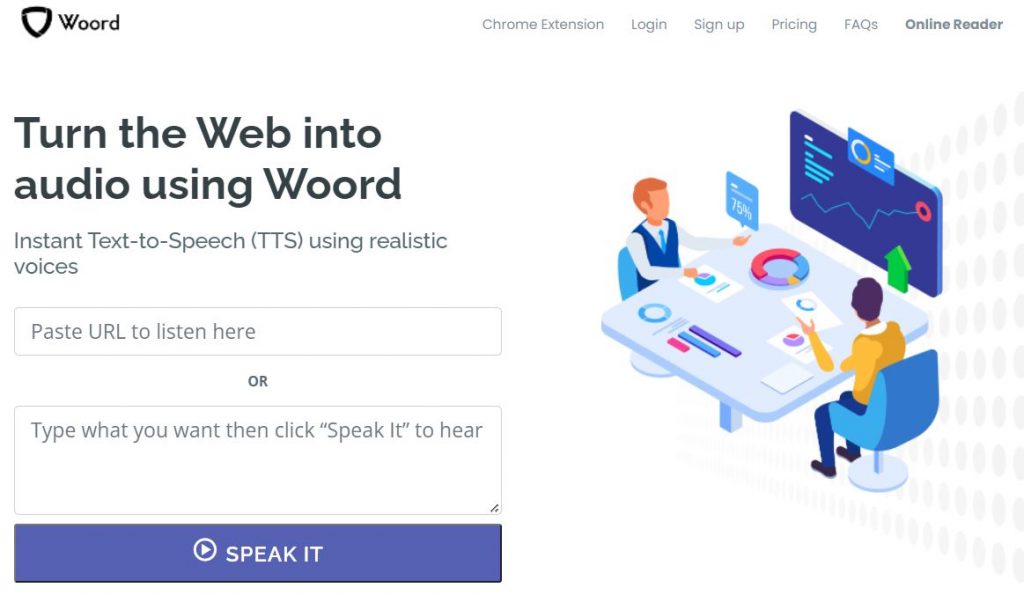Text-to-speech gadgets are easy-to-use. That’s why it could be taken as an exaggeration to talk about a ‘guide’. But there’s basic information about this technology that newbies and interested people might want to know before starting their read-aloud journey.
Text to speech or TTS, also recognised as “read-aloud” technology, is an asset that reads digital text out loud. It can transform words on a computer or other digital device into audio with the click of a button or the touch of a finger. Through the power of text-to-speech, you may generate masculine, female, and androgynous voices in various languages and dialects. But, most importantly, TTS comes to the rescue whenever information has to be delivered simply, effectively, and memorably.
Nowadays, TTS programmes produce astonishingly lifelike voices. These sounds are nothing like the boring, artificial voices that most people identify with the term “text to speech”. Its speakers are no longer robotic, and they accurately reproduce the acoustic qualities of human speech. This is due to the cutting-edge technologies used to create these stunning AI voices. To train a neural network, deep learning researchers employed a collection of speech recordings from real-life actors. Then, utilising text input from users, the neural network creates audio samples.

What’s more, this spectacular technology is cost-effective and assists everyone in meeting their deadlines. Simply input or copy and paste your content into the text box, choose your voice, and render. Listen as your precise words are read out to you in seconds, complete with realistic pauses and human intonation.
There are different types of TTS tools you can find on your computer or mobile devices. Many of these digital instruments count with built-in speech synthesis or have the chance to download a read-aloud application from the App Store. Not to mention several web-based platforms are available for free. There are also numerous text-to-speech softwares. And, if you enfold Chrome’s browser, you can obtain an extension to turn your texts into discourse.
One might think you encounter one of these widgets or the others. But, actually, it is possible to access TTS in more than one of its diverse forms. Don’t believe it? Then you may want to check the following AI voice generator:
Woord
Woord offers 50 realistic voices in 28 languages (English, Spanish, Portuguese, French, German, Russian, Turkish, Hindi, Italian, Japanese, Chinese, Vietnamese, Arabic, Dutch, Norwegian, Korean, Polish, Swedish, and others), as well as some dialects such as US, UK, and Indian English, Catalan and Mexican Spanish, Brazilian Portuguese, Canadian French, Mandarin Chinese, Hindi, and Bengali Indian.
Moreover, Woord can assist you in choosing a male, female, or gender-neutral spokesperson, as well as speed up or slow down the pace. But that’s only the beginning. The software includes an SSML editor, which allows you to emphasise and whisper sentences, add pauses and breaths, and change phonemes as needed. You may also choose your voice device profile (IVR, Smarthome and GPS, among others). As a result, Woord provides you with total command over your mouthpieces to customise them according to your preferences.
Last but not least, you can obtain Woord‘s benefits through the website or the app. Not to mention you can get a Chrome extension and API access. Plus, it encompasses features such as OCR technology and MP3 download. Thus, you can convert your text-based material (pdf, txt, doc(x), pages, odt, ppt(x), ods, non-DRM epub, jpg, and png) any way you desire.
We hope you find this article helpful!


